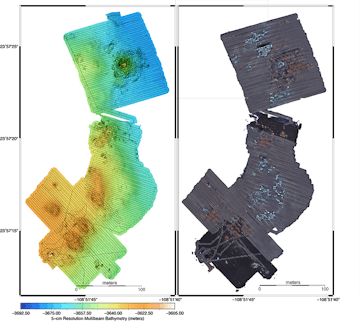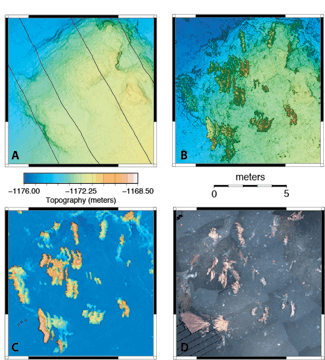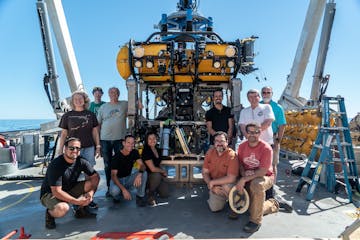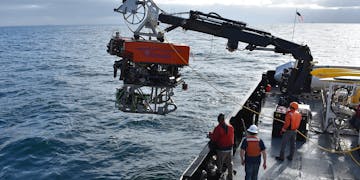
Left, low-altitude survey of Auka Vent Field, in the Gulf of California, showing five-centimeter resolution multibeam bathymetry overlain with the ROV SuBastian tracklines. The survey lines are spaced three meters apart. Right, low-altitude survey of Auka Vent Field showing two-millimeter resolution photomosaic. The parts of the survey collected at a 3.5-meter altitude rather than a 3-meter altitude are darker.

Ten-meter-by-ten meter section of the coral community survey shown above. A) ROV track lines overlain on multibeam bathymetry (five-centimeter resolution). B) Lidar bathymetry (one-centimeter resolution). C) Difference between lidar and multibeam bathymetry, revealing soft animals detected by the lidar but not the multibeam (five-centimeter resolution). D) Photomosaic of uncorrected images at two-millimeter resolution.

Science team on the Falkor cruise. Standing from left, Jennifer Paduan, Erik Trauschke, Robert Zierenberg, Giancarlo Troni, David Clague, and David Caress. Kneeling from left, Nestor Ramirez-Zerpa, Ronald Spelz, Emery Nolasco, Eric Martin, and Hans Thomas. Photo by Monika Naranjo Gonzalez / photo courtesy of Schmidt Ocean Institute.


